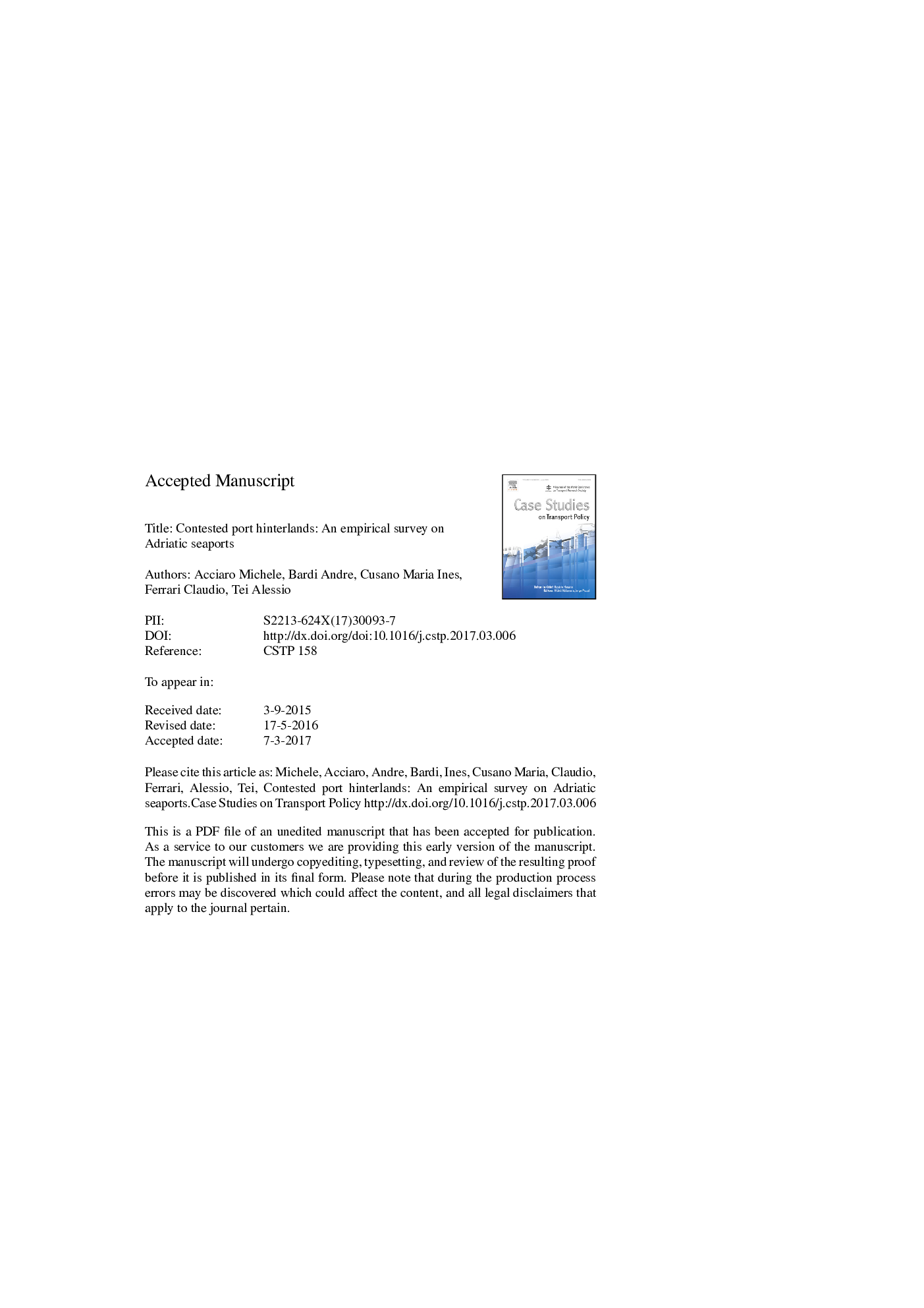| Article ID | Journal | Published Year | Pages | File Type |
|---|---|---|---|---|
| 4911665 | Case Studies on Transport Policy | 2017 | 24 Pages |
Abstract
The empirical research is based on public statistics (e.g. Eurostat, Amadeus database) and on data directly collected from the operators currently serving Southern German firms with the main commercial ports and with the potential port actors that may be interested in an enlargement of the port catchment area in the studied region (e.g. South European ports). Apart from the trade pattern analysis - based on the general statistics - and the logistics structure analysis - based on the information collected by transport and logistics operators -, a direct survey has been conducted on a sample of manufacturing companies located in Southern Germany and Western Austria in order to understand what actions should be taken in order to promote the use of Adriatic ports and then reshape the boundaries of the catchment areas of these ports. Statistical tools and a bottom-up approach have been developed in order to evaluate the results. Main findings are then related to potential strategies that may fill in the competitive gap between Northern and Southern European ports when they compete to serve the same hinterland. The original contribution of the research is an insight on the relative importance of the infrastructure endowment, the generalized transport cost and also of some non-monetary conditions - as cultural and behavioural aspects - that have an influence in determining the effective boundaries of ports' hinterland.
Keywords
Related Topics
Physical Sciences and Engineering
Engineering
Civil and Structural Engineering
Authors
Michele Acciaro, Andrea Bardi, Maria Ines Cusano, Claudio Ferrari, Alessio Tei,
